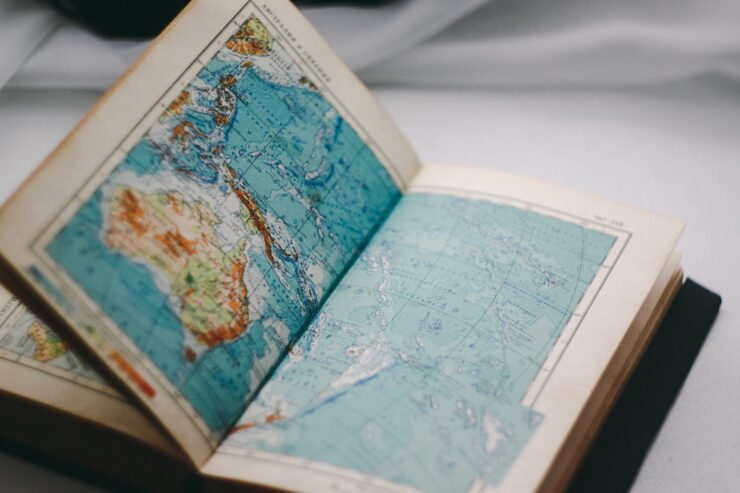If you were an impressionable, bookish child, and you read E.L. Konigsburg’s From the Mixed-Up Files of Mrs. Basil E. Frankweiler, you probably wanted to go to the Met. I certainly did, and I know I was not alone; a loose and entirely unscientific polling of friends determined that we shared this book-related desire. In the book, two kids from Connecticut run away and, for a time, get themselves locked in the Met, where they hide in bathrooms and generally make themselves—sneakily—at home, for a time.
The dream was powerful stuff. Not just running away, but running away to an iconic location. Pretending it was yours. And knowing that while the dream was unlikely, the Met, at least, was real.
When you read SFF, you travel to a lot of different places: Narnia, Prydain, countless fantasy kingdoms, or the deepest reaches of distant galaxies. You also, sometimes, stay closer to home, in stories that have magic or aliens yet take place on this very planet. And once you’re a grownup, you might, if things work out just so, get to visit some of the places where those stories happen.
And there are just so many of them.
The first place I wanted to go was Crete. No, Wales. No—there’s no telling. I grew up on Greek mythology and wanted to go everywhere a goddess had set foot, but Crete seemed especially fascinating thanks to June Rachuy Brindel’s Ariadne, which I found on my mom’s shelves and absolutely did not understand.
Wales, though. From Mary Stewart’s Merlin books to Lloyd Alexander’s Prydain, I gradually came to understand that many, many stories had to do with Wales, one way or another, even if they did not strictly speaking take place there. (Is this why I love Torchwood at least as much as Doctor Who? Look, we all have our biases.) Likewise, if a location was mentioned in an Arthurian story and there’s a real place with that name, I wanted—I still want—to go there. For some, it’s Sherwood Forest. For some, it’s just London, magical, foggy, always-different London, whether you found it through Jonathan Stroud’s Bartimaeus Trilogy or Jonathan Strange & Mr Norrell. Or Good Omens. Or Neverwhere, not that you can find all of those places.
Gaiman, though, inspired one bookish trip for me (so far; The House on the Rock is still near the top of my list). American Gods is a travel guide, if you want it to be. Atlas Obscura collects just five of the book’s locations into a road trip, but there are more. I went to Rock City, at Lookout Mountain, which is a very strange place that I have seen with my own eyes and yet can’t really explain. You walk around and look at things. You wander through caves in which weird little scenes with weird little dolls are set up. And, if you’ve read American Gods, you think about where certain scenes take place. I can’t tell you if it all seems surreal regardless, or if the fictional overlay I brought with me made it feel even stranger.
Before that, I found myself in New Orleans on a work trip and took a solo streetcar ride just to see the Garden District. I didn’t have any idea where, exactly, I ought to look for the setting of Anne Rice’s Vampire Chronicles, but it didn’t really matter: Everything I saw, every house, every wrought-iron gate, every low-hanging tree that I didn’t know the name of seemed as if it could’ve made an appearance on the pages of those novels.
If I hadn’t already been on Seattle’s Underground Tour, I would have wanted to go after Cherie Priest’s Boneshaker. I know there are no magic doorways that let a person pass between Sydney and New York, but Justine Larbalestier’s books made me look for them all the same. Neal Stephenson’s Termination Shock inspired great curiosity about the Maeslantkering, which is something I’m almost certain I would not otherwise have known of. One friend dreamt of seeing the Alhambra because of Guy Gavriel Kay’s The Lions of Al-Rassan; another wants to visit Edinburgh, thanks to V.E. Schwab’s City of Ghosts. I want to see Dominica because of Jean Rhys. If I ever get to Paris, I will certainly think of Madeline.
But even living in New York can feel like living in a book. There are markers of well-loved stories, like the Alice and Hans Christian Andersen statues in Central Park; there are iconic buildings that appear in so many stories, famed streets, oft-crossed bridges. I once lived down the street from McSorley’s and thought about e.e. cummings all the time (“i was sitting in mcsorley’s. outside it was New York and beautifully snowing.”) I never went in.
Before I ever got there, NYC was So You Want to Be a Wizard territory, where there are dragons under the streets. (Watch steam coming out of any manhole; it’s not hard to convince yourself there are dragons under there.) But it could’ve also been archy and mehitabel that made me want to live there. Now, it could be The City We Became or The Fortress of Solitude, both of which will give you enough destinations to keep you busily seeing the city—the real city—for weeks.
But the most magical thing I ever found in New York came from an unlikely source.
It was a gate. A gate I had probably walked by dozens of times if not more; I lived right around the corner. It is a kind of self-preservation, when you are young and broke in New York, to just not see some of the things that look too rich for your blood. But that’s not what this was. It was a gate I should have investigated—and might never have were it not for Cassandra Clare, whose City of Bones led me straight to the New York Marble Cemetery, a place which feels like a spell and a secret and an impossibility. What it is is a small piece of history tucked behind buildings on Second Avenue. When I finally got to see it (via Open House New York, which is its own kind of magic), the experience was practical and fantastical at once. I could see into the back of a bar I’d been to once, back when it was something else. I could see the backs of buildings that were entirely familiar. But it was like the cemetery, with its stones and green grass, had just appeared.
Now, I live in Portland, where fictional tourism is a bit less common, at least on the bookish side of things (I can tell you a lot about the locations in Grimm, though). But I read Colin Meloy’s Wildwood before I had ever set foot in Portland’s Forest Park, and discovering how much of that book you can map straight onto the park was a delight—marvels practically in my backyard, in the park I never knew was there. (All the crows here know something.)
Years and years and years after I first read From the Mixed-Up Files of Mrs. Basil E. Frankweiler, I found myself in the bowels of the Met. I had been to the museum, sure; at that point I had lived in New York for years. But when I went to sell books for a lecture, I went in the back way, through a magical land that was really just a loading dock and a basement full of art in various states of packed-up and being unpacked. But the signs said MAKE WAY FOR ART —a statement of purpose I wanted to internalize, and also a very straightforward instruction—and there was no telling what was in any of those boxes. It wasn’t spending the night there, but when, at the end of the event, the security guard led me out, down an empty elevator and through empty halls—the wonder of that moment was because of a book, and I’m still grateful.
Where has a book led you when you closed its pages? Where did fiction make you want to go?














